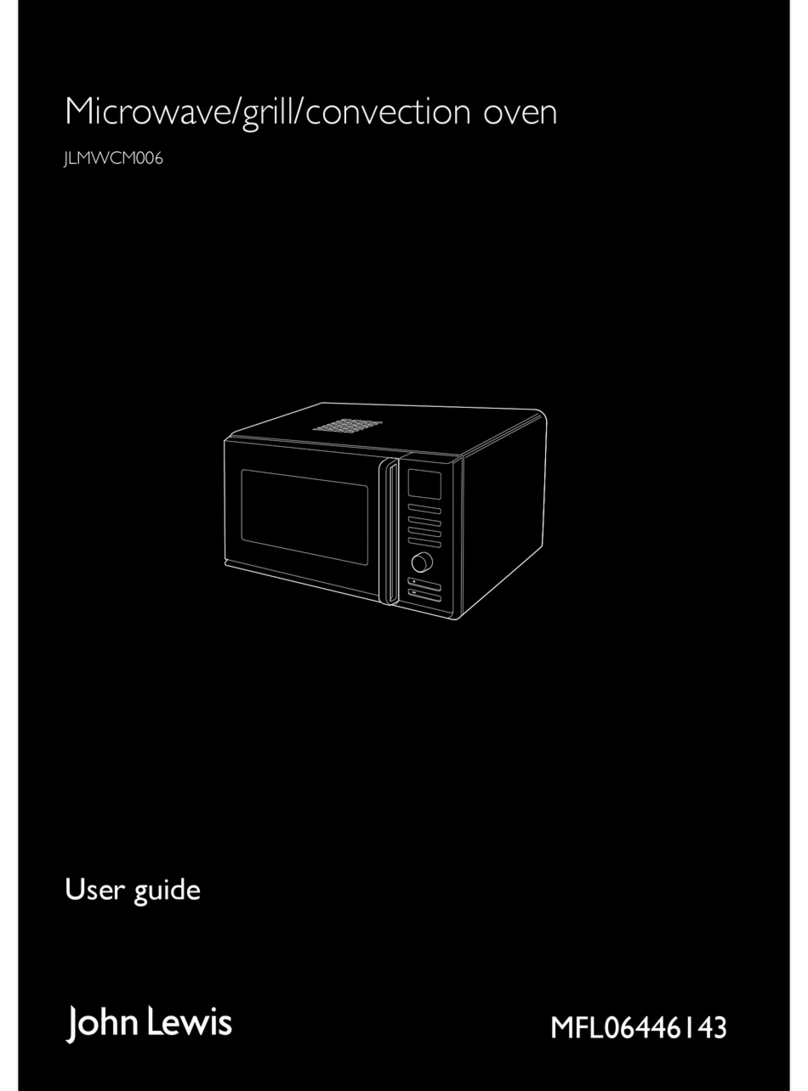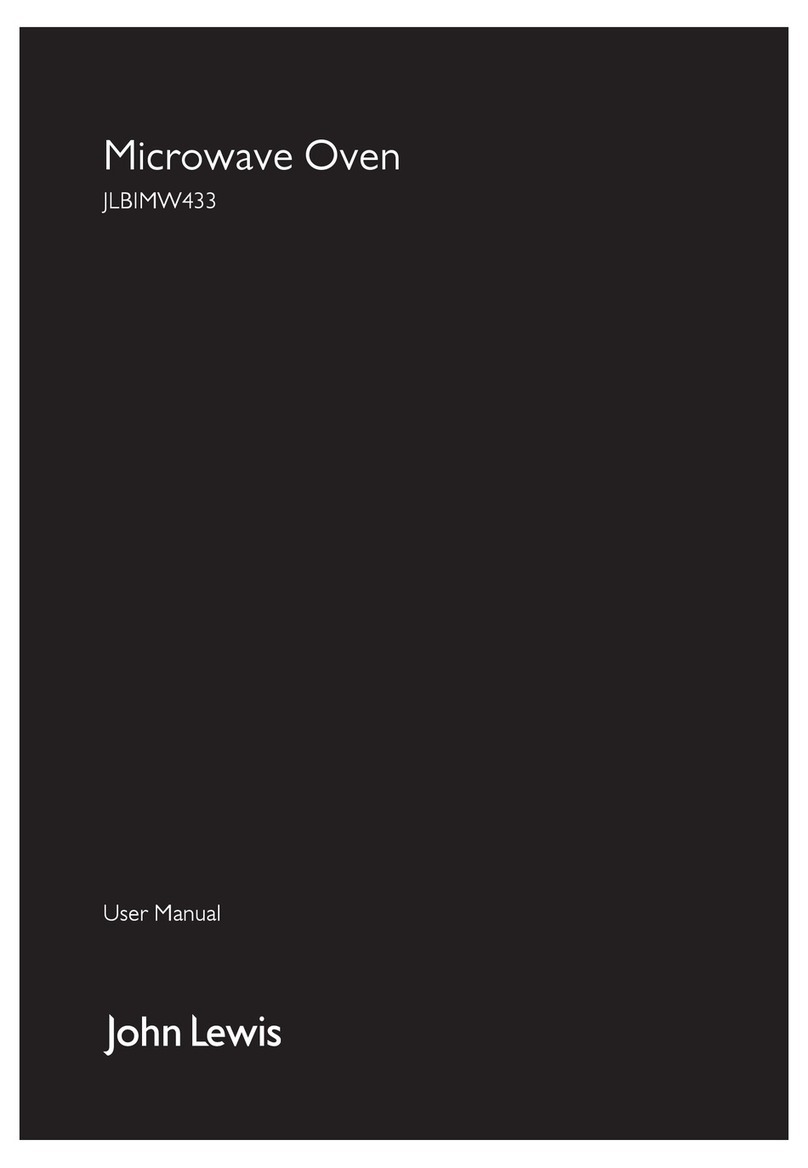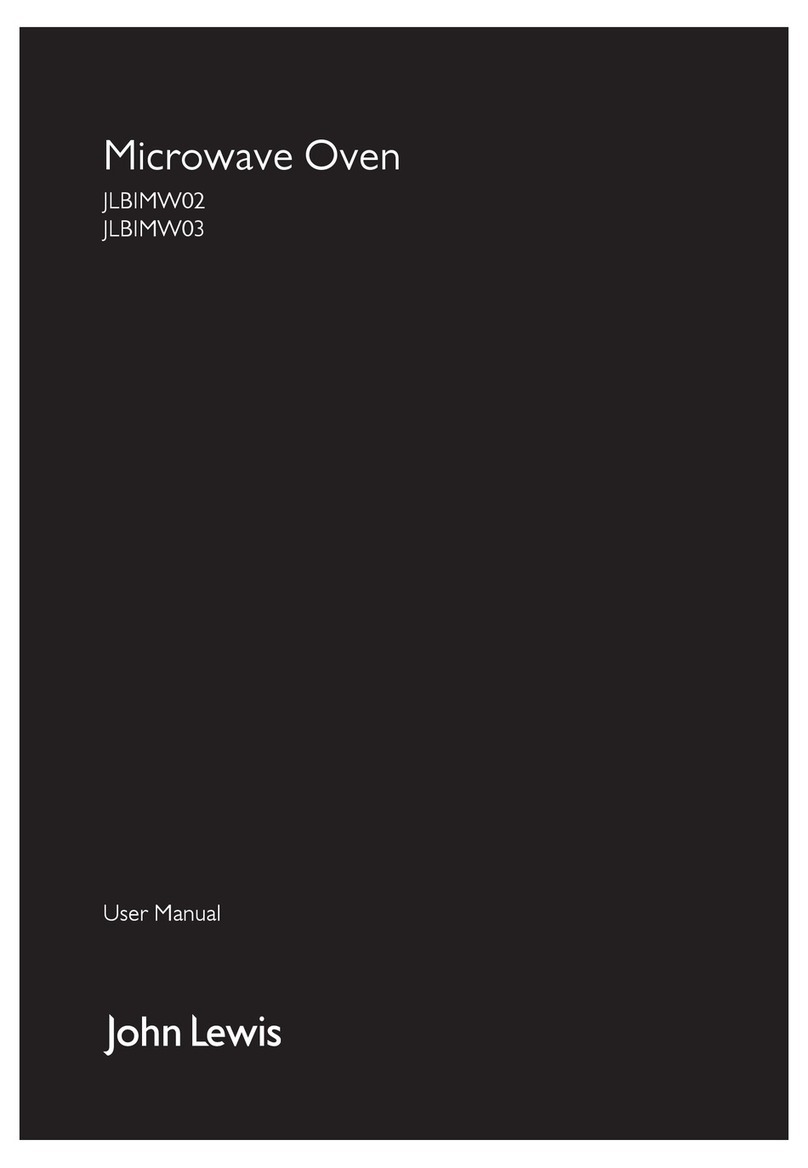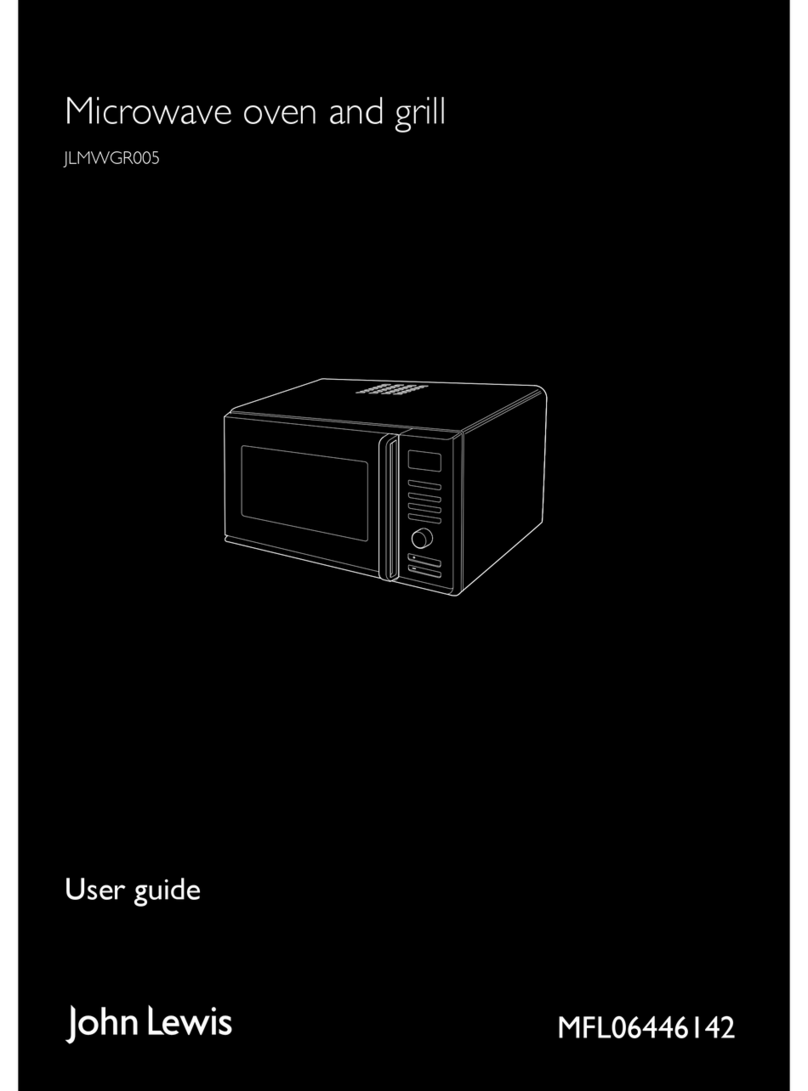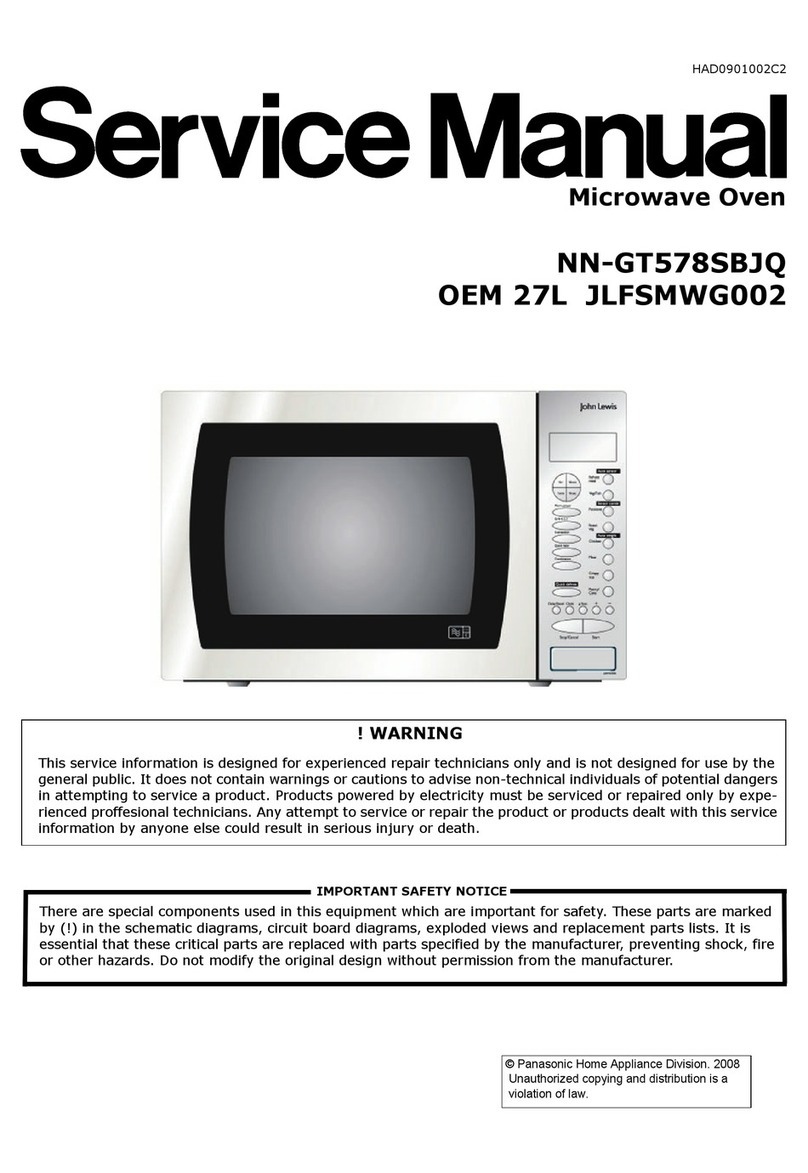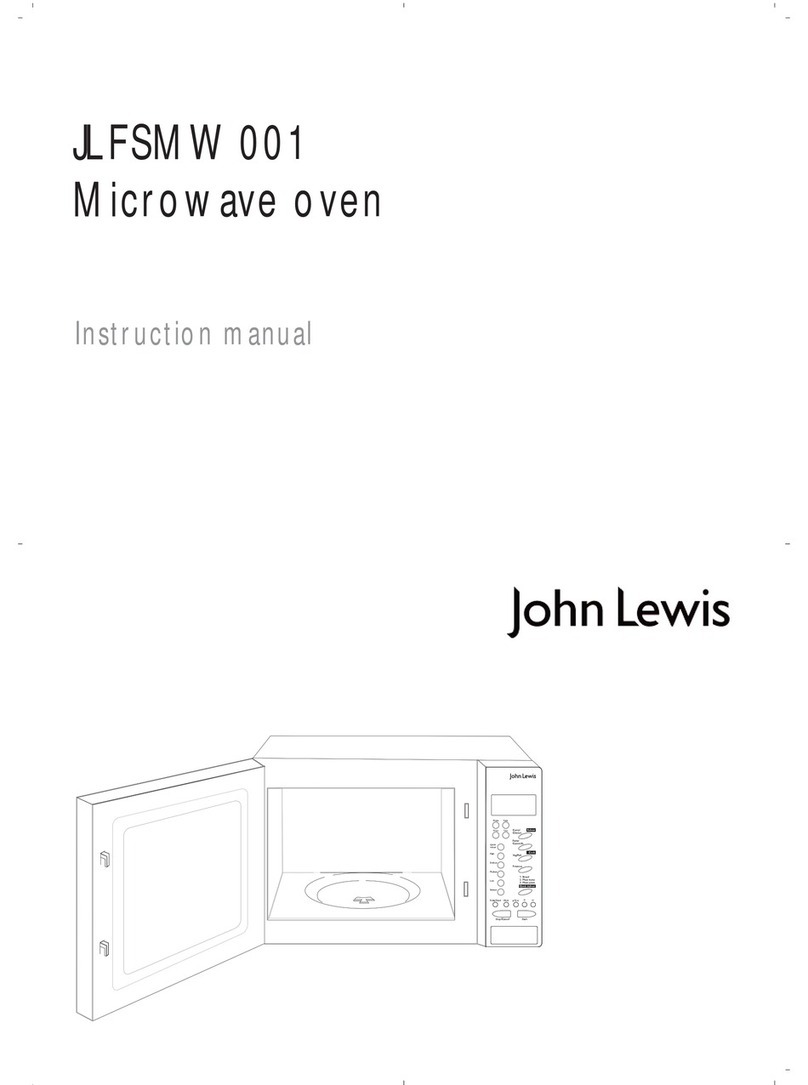NN-CT878SBJQ JLFSMWC003 32L OEM
10
8 Description of Operating instruction
8.1. Variable power cooking control
The HIGH VOLTAGE INVERTER POWER SUPPLY controls
the output power by a signal from the digital Programmer circuit
DPC. The power relay (RY1) turns on to supply power to the
inverter circuit. The level of output power is controlled by the
drive signal level from the inverter circuit.
NOTE1: The ON/OFF time ratio does not correspond with
the percentage of microwave power since approximately 2
seconds are required for heating the magnetron filament.
NOTE: 2 If microwave cooking is over 8 minutes on HIGH
power, the fan motor rotates for 1 minute after cooking to
cool the oven and electrical components.
Duty cycles for microwave cooking
8.2. Grill Cooking
The digital programmer circuit controls the grill power by oper-
ating the power relay RY4 in the sequence shown in the table
below
Duty cycles for Grill Cooking
8.3. Auto weight defrost, Auto
weight Cook
When an auto control feature is selected and the start pad
pressed:
1. The digital programmer circuit determines the power level
and the cooking time and indicates the operating state in
the display. The table shows the corresponding cooking
times for each category and its respective weight.
2. When the cooking time in the display window has
elapsed, the oven turns off automatically via the control
signal from the digital programmer circuit.
Note: After auto cooking if the oven temperature is
over the predetermined temperature the fan motor
rotates to cool the oven and its components.
Defrost Menu’s
Weight Menu’s
Output Duty ON/OFF
ON time OFF time
High 1000W 22” 0”
Defrost 440W 16” 6”
Medium 600W 22” 0”
Low 440W 22” 0”
Simmer 440W 15” 7”
Warm 440W 8” 14”
Duty ON/OFF
ON Time OFF Time
Grill 1 66” 0”
Grill 2 54” 12”
Grill 3 42” 24”
Category 1st Touch Weight Cooking Time
Turbo Defrost 500g 8m 20s
Category 1st Touch Weight Cooking Time
1. Whole Chicken 1000g 18m 20s
2. Chicken Pieces 300g 9m 30s
3. Beef / Lamb 500g 14m 40s
4.Casserole 800g 56m 40s
5. Pastry 600g 15m 00s
6. Cake 400g 11m 40s
